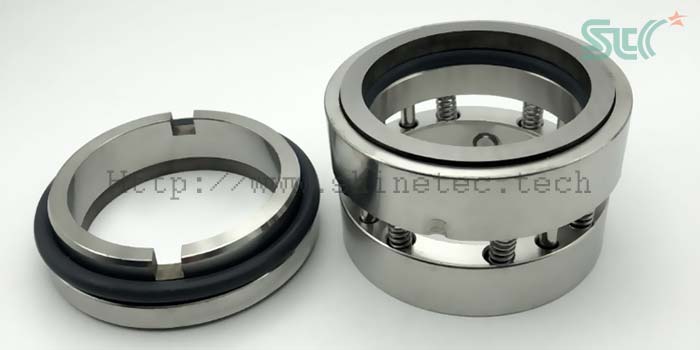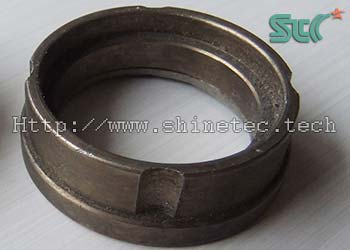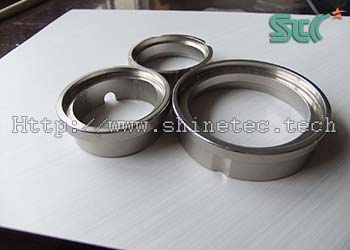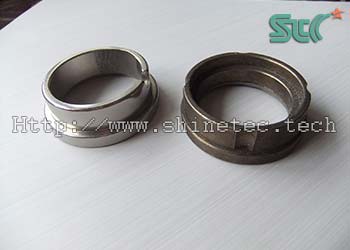How to deburr, descale, deflash, finish and polish precision aluminum alloy die casting gearbox housing
Deburring, deflashing, descaling, finishing and polishing technology for precision aluminum alloy die casting gearbox housing
Aluminum alloy die-castings are widely used in the production and manufacturing of mechanical parts in the electronics, automobile, aircraft, shipbuilding, motor, home appliance and other industries. They have the advantages of beautiful appearance, light weight, high strength and corrosion resistance. However, defects such as burrs, flash, and sharp edge often occur during the production process, so the surface finishing process of the product is particularly important. In this case, we will share a process technology and method for the automated and efficient deburring, deflashing, descaling of aluminum alloy die-casting parts for automobile gearbox housings. This polishing process solution is also suitable for the surface finishing of other die-casting parts made of soft metal materials such as zinc, magnesium, and copper.
- jerrylu
- 2024-06-03
- 0 Comments
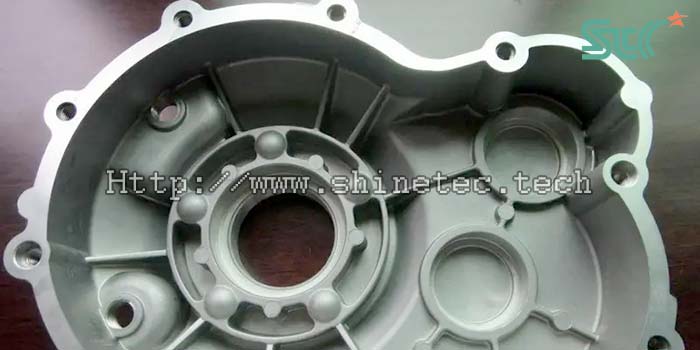
1. Aluminum alloy die-casting gearbox housing before polishing
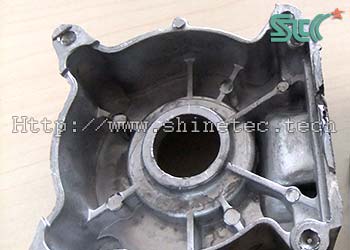
Materials:
aluminum alloy
Appearance:
deges burrs,surface oxide scale.
Shape:
irregular shape
Size:
300*260*150 MM
Pre-polishing process:
high pressure casting
Post-polishing process:
packing
2. Finishing and polishing requirements
- deburring,deflashing,descaling.
- smooth,bright surface, no burrs, no oxide scale.
3. Aluminum alloy die-casting gearbox housing polishing process details:
| Process steps | (1) finish to deburr,deflash,descale | (2) cleaning | (3) vibratory drying |
|---|---|---|---|
| Machinery and equipment | vibratory finishing machine | vibratory finishing machine | vibratory dryer |
| Speed | highest | highest | highest |
| Tumbling media | Cone resin media | Angle cut cylinder porcelain media | corn cob polishing media |
| Abrasive media to workpiece ratio | 4:1 | 4:1 | 8:1 |
| Finishing and polishing compound | finishing liquid | cleaning liquid | no |
| Water | appropriate amount, liquid level does not exceed abrasive media | appropriate amount, liquid level does not exceed abrasive media | no |
| Polishing time | 60 minutes | 15 minutes | 15 minutes |
| Remark | parts separated and picked up automatically, rinsed with water | parts separated and picked up automatically, rinsed with water | vibratory drying |
4. The effect of deburring, deflashing, descaling and polishing the aluminum alloy die-casting gearbox housing
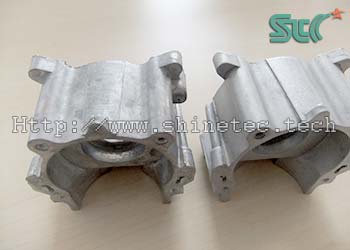
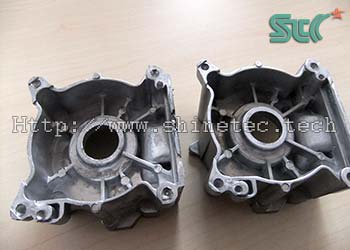
5. Additional instructions
-
The gearbox housing is produced by high-pressure casting of aluminum alloy. The product has high precision and a smooth surface, but burrs and flashes will appear on the edges and holes of surface, which need to be polished. Therefore, a finishing process combining rough deburring, deflashing, descaling and cleaning is adopted. The rough finishing adopts a vibratory finisher with medium cutting force cone plastic media. The sharp angle of the tumbling media can reach into the grooves, corners and inner walls to remove burrs and flash.
A vibratory polishing machine is used for cleaning. The abrasive media is made of precision finishing material without cutting force angle cut cylinder porcelain polishing media. This tumbling porcelain media has a high density and has a polishing and brightening effect, which can further reduce the surface roughness. - In order to improve the anti-rust performance of the product after water treatment, use a vibrating dryer with corn cob drying media to absorb moisture and dry the inner and outer surfaces.
6. Final summary
- In this case, we demonstrated the process solution of automated deburring, deflashing, descaling and polishing of a precision die-cast aluminum product, a gearbox housing, used in the automotive parts industry.
-
If you need professional technical support for the polishing of the following aluminum alloy, zinc alloy, magnesium alloy or copper alloy die-cast parts, you can refer to the above cases:
Deburring, deflashing process technology methods for aluminum alloy die-casting automobile and motorcycle gearbox housings parts polishing process methods
Automated deburring of aluminum alloy die-castings
Deburring equipment for die-castings
How to remove aluminum alloy burrs
How to deal with aluminum alloy surface burrs
How to deburr aluminum alloy auto parts
Deburring methods for die-cast aluminum
The best way to deburr die-cast aluminum parts
Die-cast aluminum polishing and brightening technology
How to deal with die-cast aluminum polishing
Automated and efficient die-casting polishing and deburring solutions
Surface treatment methods for aluminum alloy die-castings
What are the surface treatment processes for aluminum alloy die-castings
